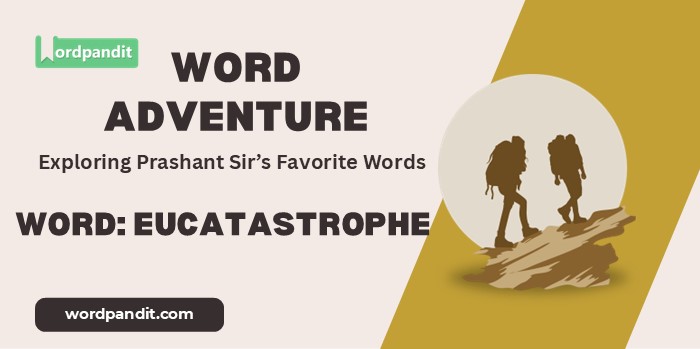Word Adventure: Eucatastrophe
The Headline
“Eucatastrophe: When Darkness Turns to Dawn in the Story’s Final Hour”
The Scoop
In the vast vocabulary of literary terms, some words capture not just a concept, but a profound truth about storytelling itself. ‘Eucatastrophe’ is one such term – coined by J.R.R. Tolkien to describe those magical moments when hope emerges from despair, when victory springs from certain defeat. Let’s explore this powerful concept that lies at the heart of some of our most beloved stories.
Let’s Break It Down
The Plot Thickens
Tolkien introduced ‘eucatastrophe’ in his essay “On Fairy-Stories,” describing it as the true form of fairy-tale ending – the sudden “turn” that brings joy through the unexpected triumph of good. For Tolkien, this wasn’t just a literary device but a reflection of a fundamental truth about hope and providence.
The term combines the Greek prefix ‘eu-‘ meaning good (as in ‘euphoria’ or ‘eulogy’) with ‘catastrophe,’ which originally meant a sudden turn or overturning in Greek drama. While ‘catastrophe’ has come to mean disaster in modern usage, Tolkien reclaimed its original meaning and transformed it into something positive.
Interestingly, Tolkien saw eucatastrophe as more than just a “happy ending.” He viewed it as a glimpse of joy beyond the walls of the world, a moment when grace breaks through and transforms apparent defeat into victory.
Word in the Wild
The Twist
Here’s something fascinating about eucatastrophe: while it might seem like a form of deus ex machina (divine intervention in ancient Greek plays), it’s actually quite different. A true eucatastrophe isn’t random or arbitrary – it emerges from the internal logic of the story, often through seemingly small or overlooked elements that suddenly reveal their significance. It’s less about luck or coincidence and more about the hidden pattern of hope woven into the fabric of the tale itself!
Make It Stick
Eucatastrophe: When the darkest night reveals the brightest dawn!
Your Turn
Think about your favorite stories – books, movies, or even events in your own life. Can you identify moments of eucatastrophe? What made these turning points so powerful? Share your examples in the comments below. Let’s explore how this concept helps us understand the stories that move us most deeply!
Down the Rabbit Hole
- Curious about Tolkien’s literary theories? Explore his essay “On Fairy-Stories” or delve into his concept of “subcreation.”
- Interested in narrative structure? Research Joseph Campbell’s “Hero’s Journey” or Vladimir Propp’s morphology of folktales.
- Want to explore similar literary devices? Look into ‘peripeteia’, ‘anagnorisis’, or ‘denouement’.
The Last Word
As we conclude our exploration of ‘eucatastrophe’, I hope you’ve gained appreciation for this powerful concept that helps us understand why certain story endings resonate so deeply with us. It reminds us that even in our darkest moments, hope can spring forth unexpectedly. Until our next word adventure, this is Prashant from Wordpandit, encouraging you to look for those moments of eucatastrophe in stories and in life!












